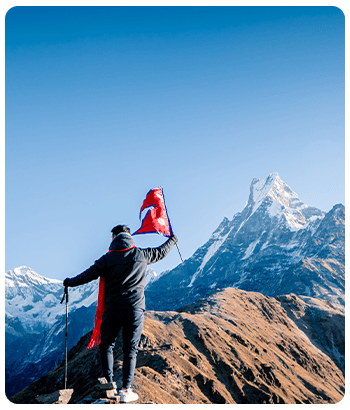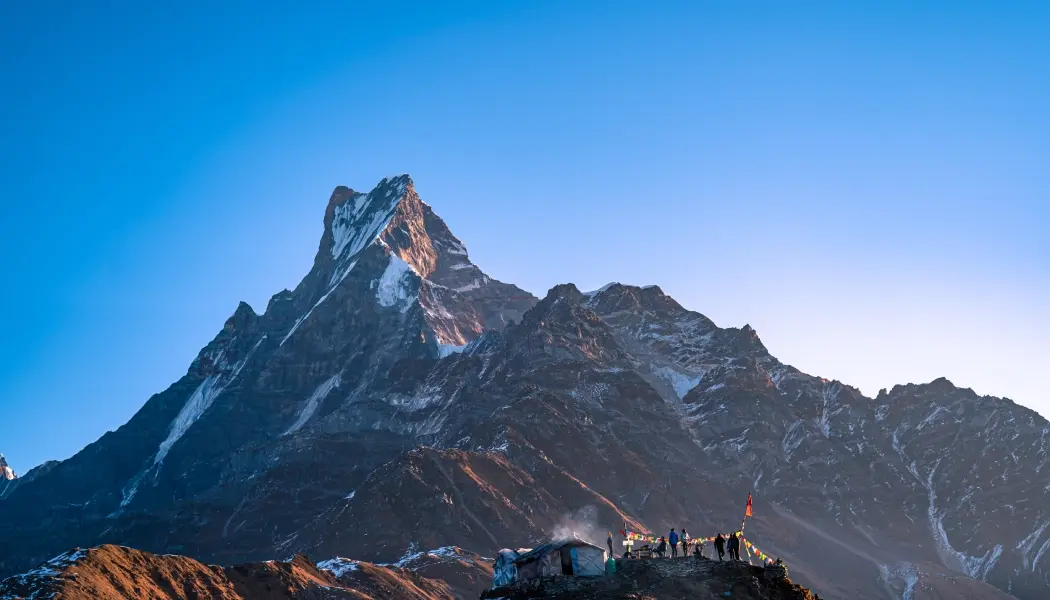

Nepal captivates visitors with its dramatic contrasts - from the world's highest peaks to subtropical jungles, ancient temples to bustling markets. This Himalayan nation blends rich cultural heritage spanning Hindu and Buddhist traditions with unparalleled natural beauty. Home to eight of the world's fourteen 8,000-meter peaks including Mount Everest, Nepal offers everything from extreme adventure to spiritual retreats, with warm hospitality from its diverse ethnic communities.
Nepal's tourism forms a crucial economic pillar, supporting local communities through trekking, mountaineering, cultural tours, and spiritual pilgrimages while emphasizing sustainable practices in fragile Himalayan ecosystems.
Nepal's living heritage encompasses seven UNESCO World Heritage sites, centuries-old temples, intricate wood carvings, tangible living goddess traditions, vibrant festivals, and the harmonious coexistence of Hindu and Buddhist practices.
Nepalese cuisine offers flavorful dal bhat (lentils and rice), savory momos (dumplings), hearty thukpa (noodle soup), tangy achar (pickles), and distinctive Newari specialties, blending influences from Tibet, India, and indigenous traditions.
Kathmandu's ancient bazaars showcase exquisite handicrafts including hand-knotted carpets, intricate thangka paintings, singing bowls, pashmina shawls, Dhaka textiles, and distinctive Khukuri knives made by master craftsmen.
Cultural shows featuring traditional Newari and ethnic dances, religious festivals like Dashain and Tihar, the living goddess Kumari's appearances, and Buddhist monastery rituals provide authentic cultural immersion.
Traditional Ayurvedic treatments, yoga and meditation retreats in Himalayan foothills, healing hot springs, and ancient spa traditions offer rejuvenation amidst breathtaking natural settings.
World-class trekking along routes like Everest Base Camp and Annapurna Circuit, mountaineering expeditions, white-water rafting, paragliding over Pokhara Lake, jungle safaris, and mountain biking through varied terrains.
Expanding network of domestic airports serving major trekking regions, improved highways connecting major cities, comfortable tourist buses, and a growing hospitality sector ranging from luxury hotels to authentic homestays.

Step into a realm where sacred stupas rise against the mountain skies,Where snow-capped peaks whisper tales of timeless adventure,Where warm smiles and rich traditions welcome you with open hearts,And every journey unfolds a story of wonder and discovery.
Things to Do
Trek in the Himalayas, explore ancient temples, experience wildlife safaris, attend cultural festivals, try adventure sports, and practice yoga in its spiritual birthplace.
Check visa requirements, arrange trekking permits for restricted areas, secure travel insurance covering high-altitude evacuation, and consult season-specific packing recommendations.
Layered clothing for variable mountain climates, modest attire for temple visits, quality trekking boots for mountain regions, water purification tools, and basic first-aid supplies.
Bargain respectfully in markets, keep valuables secure in busy areas, carry small denominations of currency, respect altitude acclimatization guidelines, and maintain cultural sensitivity when photographing.
Nepalese Rupee (NPR) is the official currency; ATMs available in major cities but unreliable in remote areas; credit cards accepted at established businesses; carry cash for trekking regions.
Domestic flights offer time-saving connections to trekking regions; tourist buses provide comfortable intercity travel; local buses offer authentic experiences; taxis require fare negotiation before departure.
Remove shoes before entering temples and homes; dress modestly at religious sites; walk clockwise around Buddhist stupas; ask permission before photographing people, especially during ceremonies.
Safe street food includes freshly prepared momos and foods cooked at high temperatures; specify spice preferences; most restaurants offer vegetarian options; bottled water recommended throughout the country.
Altitude sickness prevention crucial in mountain regions; drink purified water; standard vaccinations recommended; avoid isolated areas after dark; register with your embassy for trekking expeditions.
Nepali is the official language; English widely spoken in tourism sectors; network coverage reliable in populated areas but limited in mountains; local SIM cards available with identification.
Budget guesthouses ($5-15/night); mid-range hotels ($30-80/night); luxury resorts ($150-400/night); tea houses on trekking routes ($5-20/night including basic meals).
Trekking packages typically $30-100/day including guide, porter, permits, and lodging; cultural tours $40-80/day; adventure activities from $30 (paragliding) to $300+ (mountain flights).
Fixed-price government emporiums offer quality assurance; negotiate 30-40% in local markets; verify material authenticity for pashminas; export restrictions apply for antiques over 100 years old.
First-time visitors should balance Kathmandu cultural sites with Pokhara's natural beauty; adventure enthusiasts prioritize pre-monsoon (March-May) for optimal conditions; cultural travelers plan around major festivals.



